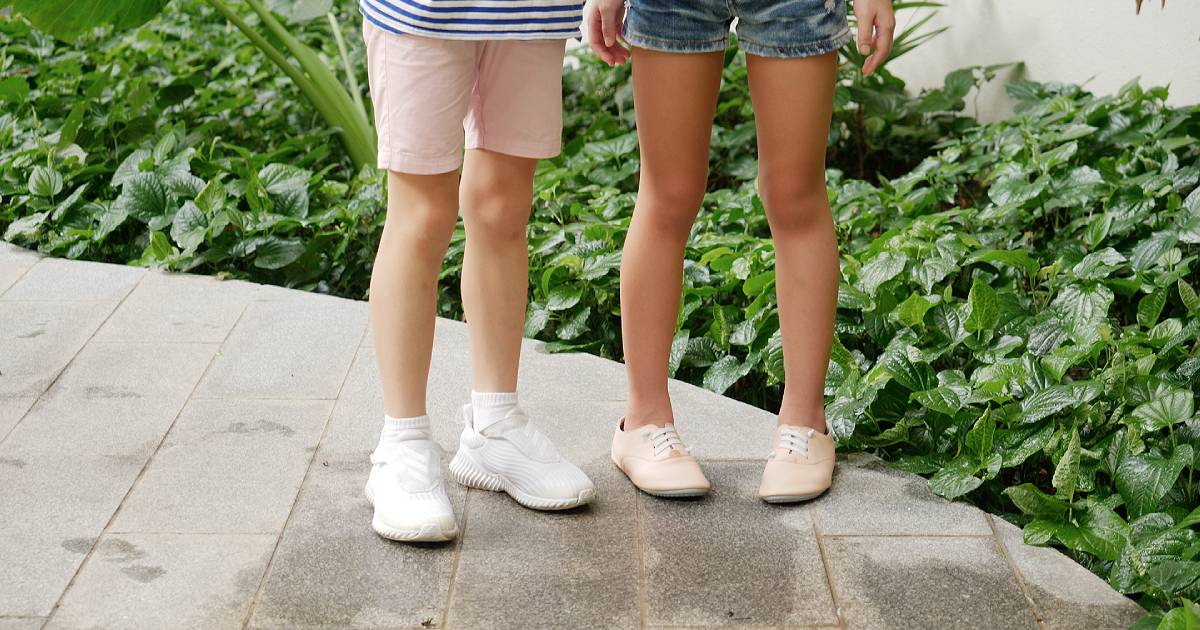Tip-toe walking, in-toeing, and out-toeing are some examples of relatively common gait abnormalities in young children. In-toe walking is characterised by your child’s feet pointing inwards during motion and can be noticed even before the child begins to walk.
In-toeing, also known as pigeon-toe gait, can be a typical variant of paediatric gait in children around the age of 4 if it is mild and does not hinder your child’s walking.
The assessment for paediatric gait conditions is different from an evaluation for adults. For example, young children are not likely to experience any painful symptoms and are typically unable to offer a detailed description of what they are experiencing. As such, parents should look for visual indicators of paediatric gait abnormalities instead.
Associated key symptoms of moderate to severe in-toeing that parents should look for include:
- Postural asymmetry
- Fatigue
- Tripping and falling
- Clumsiness
- Requesting massage for general aches
- Requesting to be carried more often
- Avoiding physical activities
While in-toe walking does not initially cause pain to a young child, it can lead to associated increased muscle and joint pains in the future if left uncorrected. It can even lead to postural deformities, such as scoliosis or lordosis of the spine, which can become progressively worse with age. While some cases can resolve on their own over time, in-toe walking may not just be a single occurrence, but an identifier of underlying conditions that the child may have.
Some musculoskeletal conditions that can cause in-toeing include:
- Hip dysplasia
- Femoral anteversion
- Internal tibial torsion
- Clubfoot
- Metatarsus adductus
A specialist in paediatric podiatry should be contacted for a detailed assessment and prognosis.
How is In-toeing Managed?
A qualified paediatric-focused podiatrist can assess your child and determine the necessary solution to help him or her develop a healthy gait and posture. Interventions for in-toeing may include specific footwear, specialised orthoses, and fabricated braces customised to your child’s lower extremities and lifestyle needs.
If you suspect your child has hip, knee, leg, or foot issues, please highlight it to your podiatrist. The feet of a child is still highly correctable as early intervention is key to the painless resolution of postural deformities, gait abnormalities, and misalignment during growth and development.
Depending on the cause, in-toeing can be resolved from birth. Speak to a paediatric podiatrist for more information.
Parental Tip: Parents should discourage their children from sitting in habitual ‘W’ positions, as this can increase the risk of rotational deformities and hip joint contractures (in-toeing).
Frequently Asked Questions
Yes, it is important for children to be assessed and seek intervention for their in-toeing at an early age. This is because the bones and joints in a child’s feet are mostly made up of cartilaginous structures, which harden and ossify in a more fixed position as the child develops. It is much harder to resolve the condition once the growth plates have closed and the bones and general structures have set into deviated positions. Therefore, it is usually advised to resolve the condition at an early age when their bones and joints are still malleable.
All paediatric lower limb devices at East Coast Podiatry are made-to-measure and cast/moulded closely to the contour of your child’s lower limbs. In general, the devices are very comfortable and children do not experience any discomfort while wearing them.
Yes, it is generally safe to wait and see if in-toeing will resolve on its own. However, it is important to monitor your child’s development and consult a podiatrist if the condition does not improve or persist. If the condition continue to persist or worsen, it is not advisable to utilise this “wait and see” method” as this will delay the window of opportunity for intervention. In-toeing may then become more difficult and time-consuming to resolve at a later stage.
For certain paediatric conditions, the lower limb needs to be restricted accordingly with a prescription device to ensure the development of limbs in the proper alignment. This prescription device will intentionally restrict the undesired movement while considering the mobility of associated joints.
Devices can be modified with different levels of flexibility and customised to your child’s specific needs.
Paediatric devices should not cause future gait problems if they are well-made by a certified clinical specialist such as a podiatrist. Proper and fully customised devices will help improve gait patterns and reduce the risk of future joint conditions such as bunions or in-toeing.
This depends on the cause of in-toeing. In-toeing that arises as a secondary result to hip conditions requires targeted exercises to help open up and strengthen the hip structure. A combination of exercise and paediatric devices should be prescribed to obtain the best results.
On the other hand, in-toeing that arises due to conditions such as metatarsus adductus and internal tibial torsion cannot be resolved with simple exercises or massages. If your child is showing signs of in-toeing outside of the normal age range, it is best to seek a professional opinion promptly.
Most orthotic devices are designed to be worn with footwear, but some paediatric ankle foot orthoses can also be worn on their own when indoors or on soft surfaces.
Results vary based on several factors:
- Age of the patient
- Type of condition
- Type of orthotic devices used
- Amount of time spent in the devices
- Activity level when wearing the devices
Many conditions can show improvement within 6 months of wearing devices, but it can take 4 to 18 months or more to relieve all signs of in-toeing in some patients.





